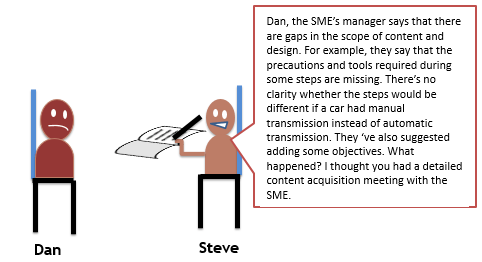Instructional design/Procedural analysis
< Instructional designIntroduction
Are you aware of the phases in instructional systems development as outlined in ADDIE, but have little or no experience in the analysis and design phases? Do you independently need to plan the analysis stage for developing instructional materials, but are unclear about the steps involved? If your response to any of these questions is “yes”, this lesson could help you.
The lesson is a short training capsule on procedural analysis, a method used during task analysis. Before we look at this method, let’s understand what task analysis is. What’s the big deal about it? Let’s go through a short activity and find out.
| Take a few minutes to go through the scenario below and answer the question that follows. |
Dan, an instructional designer, is developing a lesson on changing a car tire for the customers of Autoservice Limited, an organization offering roadside assistance and other services for automobiles. He met the organization’s subject matter expert (SME) once to understand the content and then created a design document for the lesson. The document outlined the content to be covered and the instructional objectives and strategies. He then sent the document for review to the SME and his project manager. He is discussing their feedback with his supervisor, Steve…

Click Next to continue.